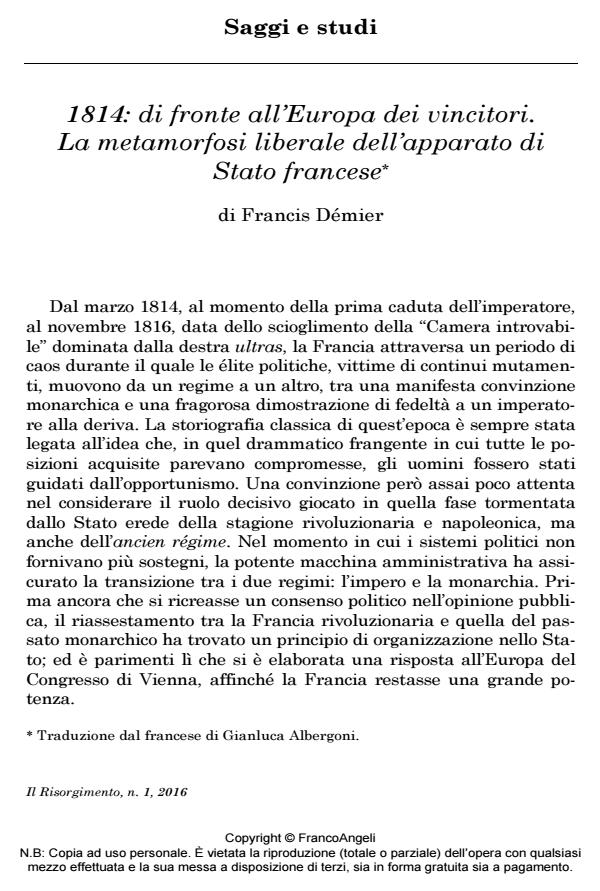1814: facing the conquerors’ Europe. The liberal metamorphosis of the French state structure
Journal title RISORGIMENTO (IL)
Author/s Francis Démier
Publishing Year 2016 Issue 2016/1
Language Italian Pages 16 P. 5-20 File size 143 KB
DOI 10.3280/RISO2016-001001
DOI is like a bar code for intellectual property: to have more infomation
click here

FrancoAngeli is member of Publishers International Linking Association, Inc (PILA), a not-for-profit association which run the CrossRef service enabling links to and from online scholarly content.
In spite of the reactionary right wing’s ambitions, the Bourbon Restoration following the fall of Napoleon in 1814 was characterized by the need of establishing some continuity with the recent past by purging the most politically compromised governmental officials. This essay shows how a powerful administrative structure, having inherited a long tradition, was able to ensure a smooth transition from the imperial regime to the monarchic one, mostly through economic measures. The technocratic elite, acting during the Restoration early years, was familiar with the ideas of Turgot, Necker and even Colbert and was a passionate reader of the English laissez-faire literature. Besides, its administrative staff had gained experience during the previous years or even during the Ancien Regime. By drawing upon a strongly pragmatic liberalism the technocratic elite was therefore able to manage a delicate transition by assigning the State the task of modernizing the economy, a task which was unavoidable if France was to keep its role as a European power.
Keywords: Transition from empire to monarchy, liberalism, modernization, state structure
Francis Démier, 1814: di fronte all’Europa dei vincitori. La metamorfosi liberale dell’apparato di Stato francese in "RISORGIMENTO (IL)" 1/2016, pp 5-20, DOI: 10.3280/RISO2016-001001